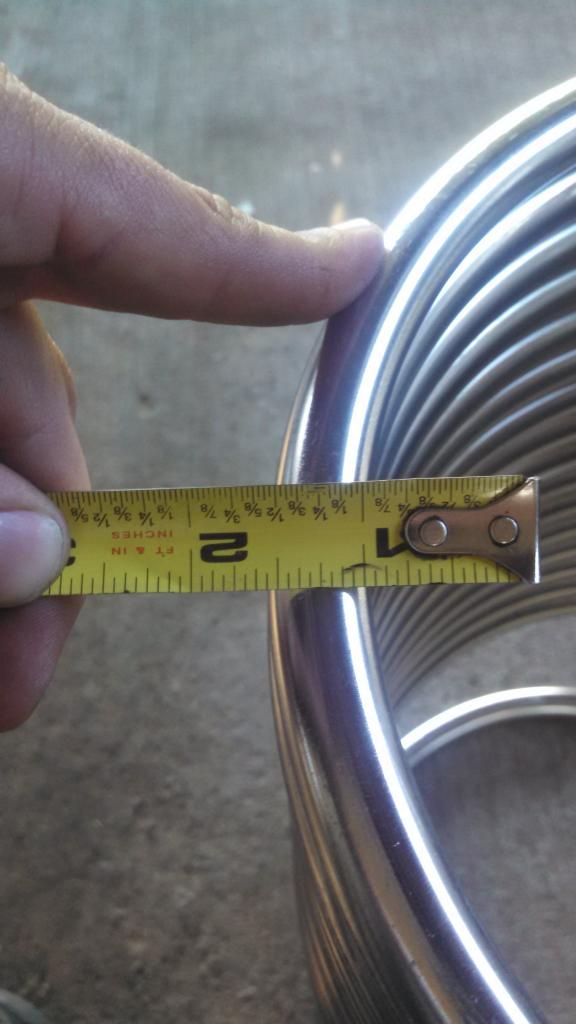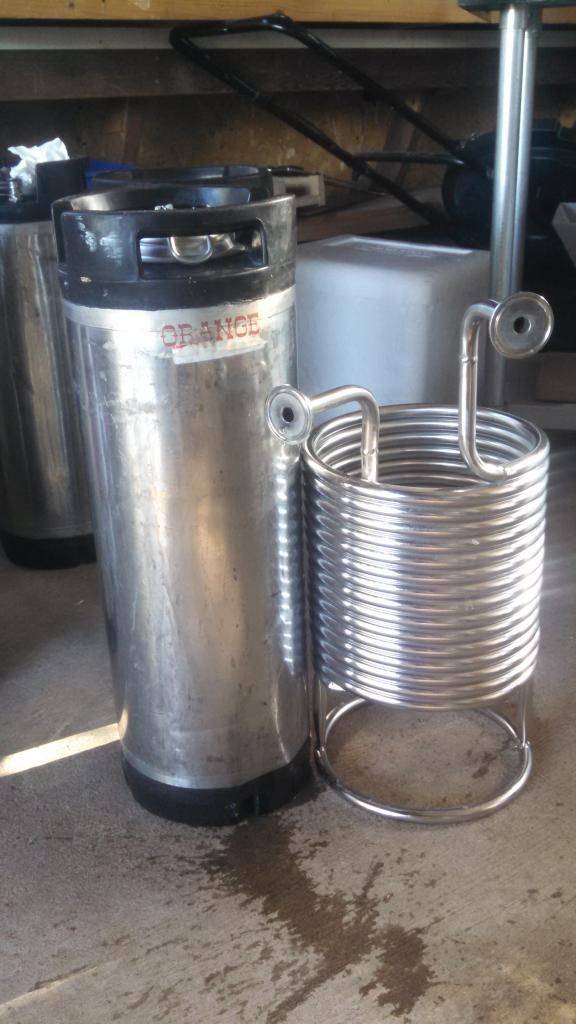sandyeggoxj
Well-Known Member
So brewing today. I took 23 gallons in the hlt @150 degrees and 7 gallons + 20# of grain in the MLT from 148 degrees to 168 degrees grain bed temp in 34 minutes today with the herms.

So brewing today. I took 23 gallons in the hlt @150 degrees and 7 gallons + 20# of grain in the MLT from 148 degrees to 168 degrees grain bed temp in 34 minutes today with the herms.
Where were you measuring the temperature of the mash at?
Not sure how 150f water can raise the mash to 168f???
Sorry I wasn't clear. That was my starting points. Hlt was 150 and mlt was 148. Then raised the mlt to 168 by heating the hlt to 172 or so. I lose several degrees as the wort goes through the pump.











![Craft A Brew - Safale S-04 Dry Yeast - Fermentis - English Ale Dry Yeast - For English and American Ales and Hard Apple Ciders - Ingredients for Home Brewing - Beer Making Supplies - [1 Pack]](https://m.media-amazon.com/images/I/41fVGNh6JfL._SL500_.jpg)
I have a 20 gallon stout HERMS setup. My issue is the same as others, with the coil raised above the element it requires top up water after mash in. That means there is lag time while I wait for the HLT to come back to temp. With no insulation on the MLT, even in the summer I lose too much temp. That leaves a few options, pre heat extra water, mash in 3-4 degrees too warm, or insulate the MLT. The other issue I have is that I have to keep my HLT around 3-4 degrees hotter than my mash set temp to account for temp loss as the wort goes through the tubing and pump.
How quick can you bring the mash up to 168 with a RIMS?
Where were you measuring the temperature of the mash at?
I'd be really interested in you HEX too - could you take a picture of it?
I'm not sure of the calculations (I should've taken ME classes...). You've got 7 gallons of water (58.38 pounds) and 20 pounds of grain and raising it 20 degrees in a little over a half and hour so your HEX is really efficient! You must have designed it well. It sounds as if your transferring heat more efficiently with the HERMS than the RIMS - you definitely have more surface area.
The more I think about it the more I wanna do HERMS. Especially a setup when I can run the bk element and the HLT element separately. For either back to back bathes or hearing the wort fast and early
Sent from my iPhone using Home Brew
Temp is measured in the grain bed.



Check post #31. That's already been answered.
Sent from my iPhone using Home Brew
I specifically said RIMS.
Just heat up some water in your boil kettle and use that as your strike water. Problem solved, no lag time.
I am trying to compare both options myself, I keep bouncing back and forth.
How quick can you bring the mash up to 168 with a RIMS?
Even if you used a 240V 4500W element on 120V
The equation changes when you use a 2000W element at 240V in the RIMS tube
2000 + 4500 = 6500 = ~27A - A 30amp breaker will easily handle it.
I've got a 5500W and 2000W running simultaneously at about 33a measured and a 40a breaker. Haven’t tripped it yet